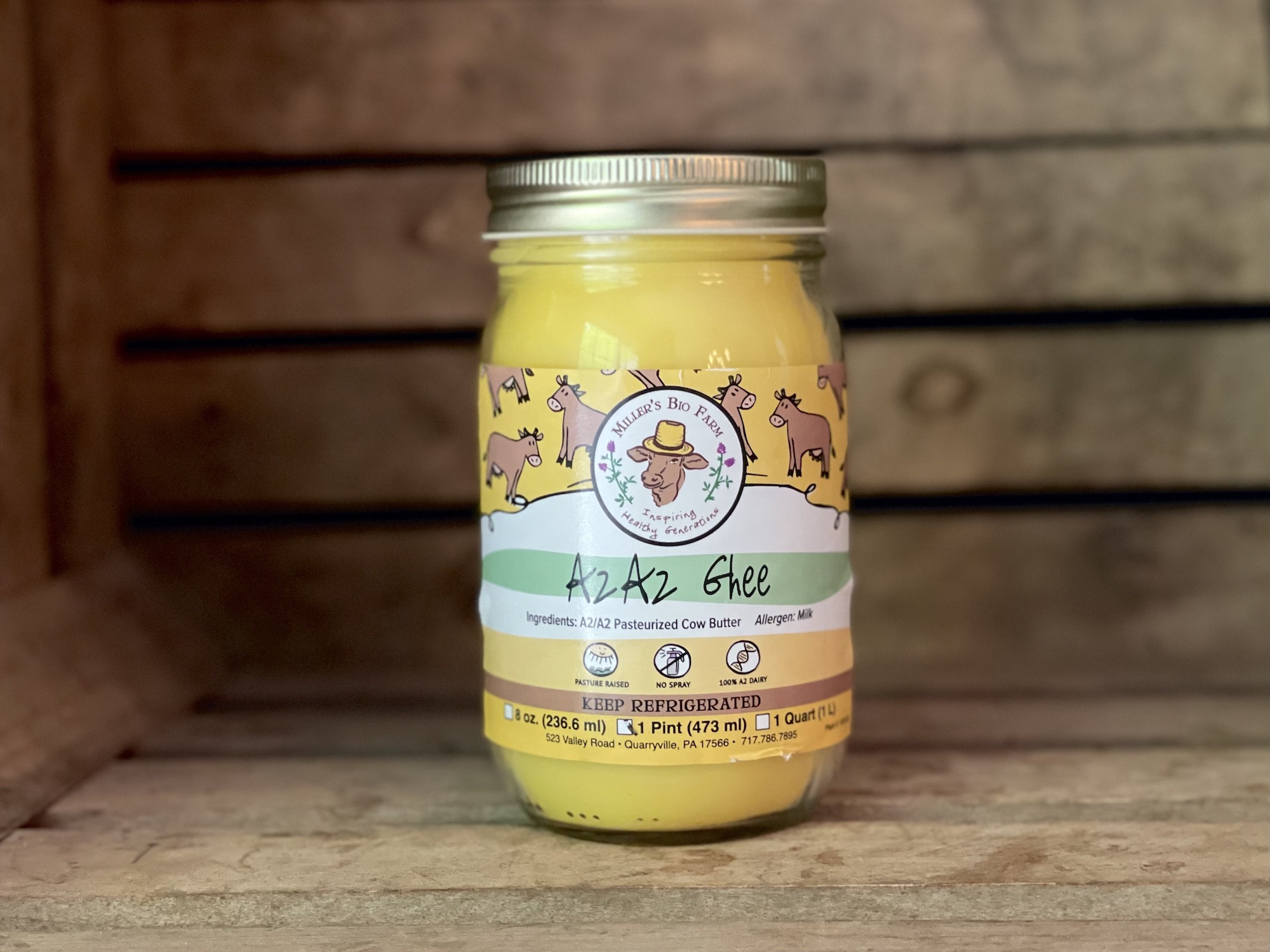
Our ghee (also known as clarified butter) is made from our A2/A2 butter made from our 100% grass fed, pasture raised cow milk. It undergoes a careful clarification process to remove water and milk solids. This results in a pure, golden fat known for its rich flavor and high smoke point, making it perfect for searing steaks or sauteeing veggies.
Need the Nitty Gritty Details?
+
Ghee has a very long shelf life and should last up to a year (or more) in the fridge or pantry. But, of course, once it's opened there are so many variables that can affect shelf life (contaminants getting in, etc).
+
Ghee is a versatile staple in the kitchen, perfect for high-heat cooking like frying and sautéing. It adds a nutty richness to baked goods and is great as a spread or a drizzle over vegetables and rice. Use it to enhance grilled and roasted meats, or as a base for creamy sauces and gravies.
+
What exactly is ghee?
Ghee, also known as clarified butter, is made from slowly simmering our A2/A2, 100% grass fed, pasture raised butter to separate the milk solids from the golden, pure fat. This process leaves behind a rich, nutty-flavored cooking oil, known for its high smoke point and deep, delicious taste.
Do you make raw ghee?
Raw ghee is not a thing. To make ghee, you need to boil it for hours to remove impurities from the fat. It's innately an ultra-pasteurized product. Whether you start with raw or pasteurized butter doesn't seem to matter. No matter what, you get the same exact ghee.
Ghee, also known as clarified butter, is made from slowly simmering our A2/A2, 100% grass fed, pasture raised butter to separate the milk solids from the golden, pure fat. This process leaves behind a rich, nutty-flavored cooking oil, known for its high smoke point and deep, delicious taste.
Do you make raw ghee?
Raw ghee is not a thing. To make ghee, you need to boil it for hours to remove impurities from the fat. It's innately an ultra-pasteurized product. Whether you start with raw or pasteurized butter doesn't seem to matter. No matter what, you get the same exact ghee.
+
The journey to creating our premium Ghee starts with our high-quality butter, made from A2/A2, 100% grass fed, pasture raised cow milk. Here's how we do it:
1. We begin by gently melting the butter. This slow and controlled process is crucial to separate the different components of the butter.
2. As the butter melts, it separates into three layers. The top layer consists of water and milk solids, the middle layer is the golden fat, and the bottom layer contains more milk solids.
3. The top layer of milk solids is carefully skimmed off. Then, the clear, golden fat (which is the ghee) is strained to remove any remaining solids, ensuring purity.
4. The clear, liquid ghee is then allowed to cool. Once solidified, it turns golden yellow with a soft, creamy texture. It's then packaged, ready to bring its rich, nutty flavor to your kitchen.
1. We begin by gently melting the butter. This slow and controlled process is crucial to separate the different components of the butter.
2. As the butter melts, it separates into three layers. The top layer consists of water and milk solids, the middle layer is the golden fat, and the bottom layer contains more milk solids.
3. The top layer of milk solids is carefully skimmed off. Then, the clear, golden fat (which is the ghee) is strained to remove any remaining solids, ensuring purity.
4. The clear, liquid ghee is then allowed to cool. Once solidified, it turns golden yellow with a soft, creamy texture. It's then packaged, ready to bring its rich, nutty flavor to your kitchen.
+
The butter used to make this ghee is pasteurized, which means that microorganisms, fatty acids, and minerals are altered.

